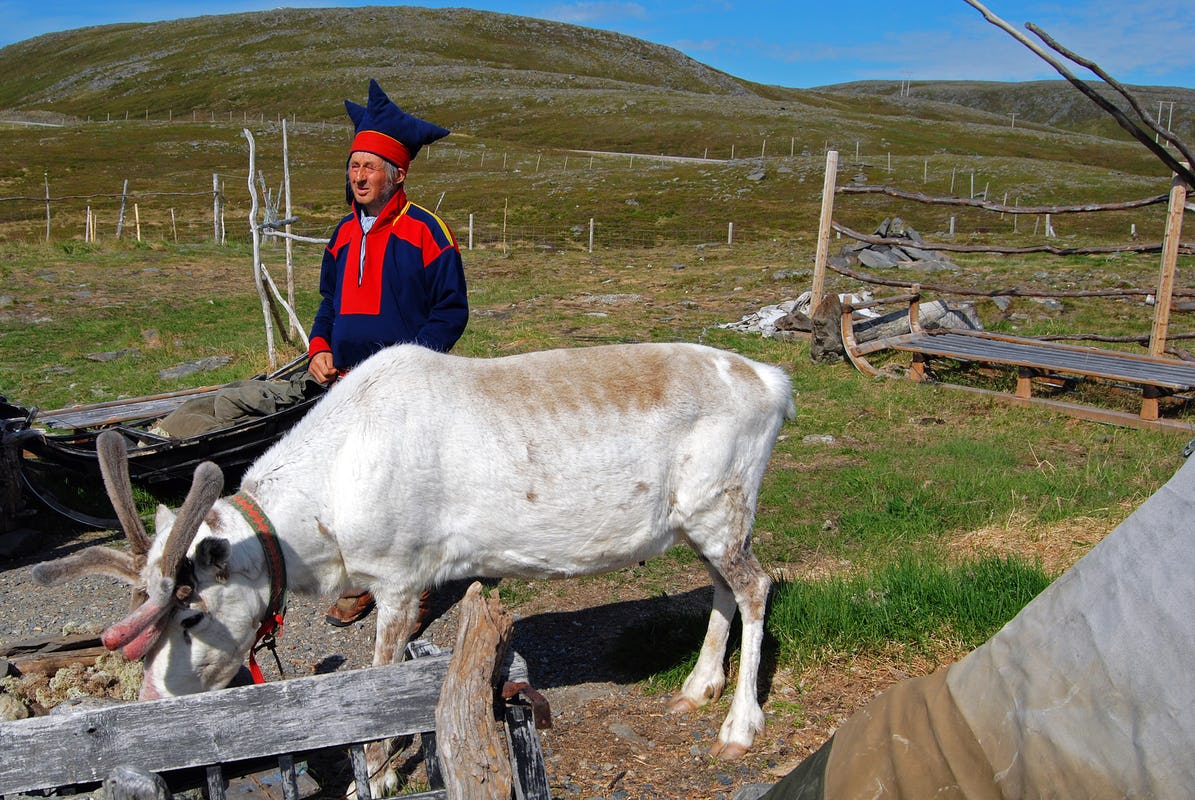A Potential Arctic Conflict: The Interests of States and Indigenous People

Although many indigenous peoples still engage in traditional activities, they are often also interested in options for economic development. Saami with his reindeer in Honningsvåg. Photo: Harvey Barrison
Since the Russian flag-planting endeavour in August 2007 numerous scholars and journalists have evoked a ‘new Cold War’, the new ‘great game’ or the ‘white gold rush’ in the Arctic. At the same time, others have pointed to the well-institutionalized state of the High North with legal and political processes under the rules of UNCLOS, the Arctic Council, and various IMO regulations and conventions.
While one could dip deep into this contrasting way of interpreting Arctic state of affairs, one could also point to one of the actual conflict lines that becomes of ever more importance the more the Arctic becomes accessible. This line runs straight through the interests of sovereign states, mostly the Arctic states but also more and more non-Arctic actors, and the interests of the people living in the increasingly strategically and economically important Arctic region.
The interesting thing about this conflict is that it shows sometimes rather paradoxical traits. The ‘usual’ issue that we expect to emerge is on the one hand the wish of governments, from northern and southern countries, to start with the economic and also military utilisation of the Arctic region in response to retreating sea ice. For example, the US government has decided to open Alaska’s petroleum reserve to more drilling activities, and Russia and Canada have announced the strengthening of their military presence in the North.
This, on the other hand, stands in stark contrast to environmental concerns of indigenous people of the North, who see their traditional ways of life threatened by increasing external influences. Crucial examples are traditional ways of food gathering, such as mammal hunting and fishing, which can easily be disturbed and even eliminated by hydrocarbon exploitation in sensitive Arctic ecosystems.
Indigenous memory of forced relocation from their traditional homelands adds to the contention. A famous example is the compulsory relocation of many Inughuit families in northern Greenland in 1953 in order to make space for the Thule Air Base. A recent example illustrating an indigenous success against Arctic drilling plans originates from 2007. The U.S. Court of Appeals for the 9th Circuit suspended Royal Dutch Shell 2007 Beaufort Sea drilling program in response to law suits filed by the North Slope Borough and the Alaska Eskimo Whaling Commission. The lawsuit sited the potential impact of Shell’s offshore drilling on subsistence hunting and on the environment (Shell Oil had already paid over $2.2 billion since 2005 to secure federal oil and natural gas development leases in offshore Alaska).
But this does not represent the whole story! Other disputes between state and indigenous interest work exactly the other way around. While the government sites environmental concerns, indigenous peoples are calling for economic development without (unnecessary) impediments.
A case in point is the legal wrangling over critical polar bear habitat in Alaska. The critical habitat designation has not only been challenged by the Alaska Oil and Gas Association and the state of Alaska, but has also been criticised by Alaska Native corporations who see opportunities for economic development hampered by the decision.
Indigenous people’s right to development and economic well-being is also explicitly being pursued by the Greenlandic government. The official Arctic Strategy from 2008, published by the Danish Foreign Ministry and the Greenland Home Rule government, marks an important shift away from purely environmental protection of the Arctic to a growing awareness that the consolidation and development of the Arctic societies must rest on economic development.
This all points to the complexity of Arctic resource utilisation. Demands to leave the Arctic alone and not pursue any economic activity in the region, does not seem to be a solution. People of the North want to be able to work, make a living, receive good health care, and send their children to great schools. At the same time, they rightly insist on their right to pursue their traditional ways of life, i.e. to hunt and fish like their ancestors have done for thousands of years.
So rather, the crux is to find the right balance between Arctic resource exploitation and people’s needs, i.e. to pursue sustainable Arctic development. This call is not new but the double-sided nature of the state vs. Nordic people conflict as outlined above indicates where this development has to start: with an honest and open dialogue between industry interests and the people affected in the respective region about the needs, risks and precautionary measures necessary before pursuing or constricting Arctic resource development.